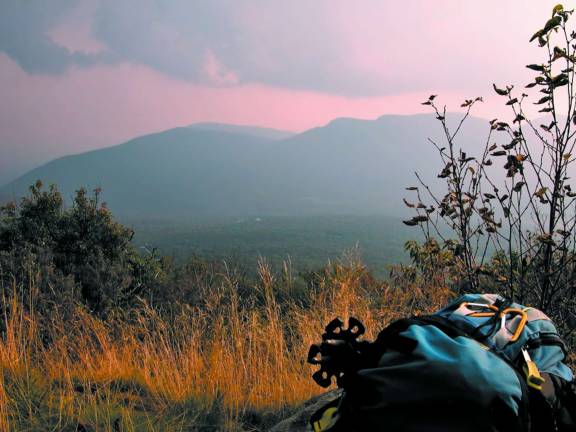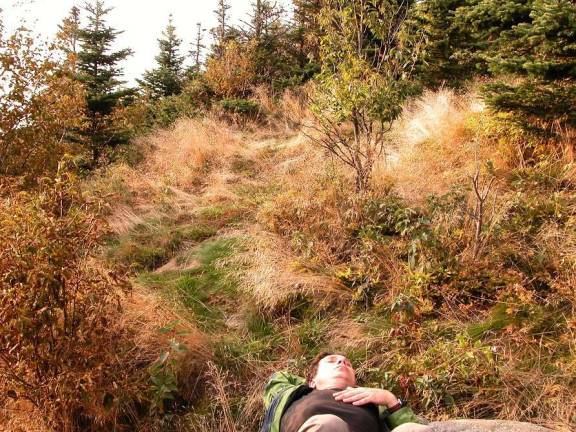Are we an invasive species?


I’m feeling stupid and contagious. Contagious, because I’ve spent the summer listening to environmental stewards, who suddenly were staked out seemingly everywhere, at trailheads and boat launches and even on mountaintops, warning that I might be carrying, in the treads of my hiking boots or the hull of my kayak, the germ of an invasive species. Stupid, because while I scrub my boat and brush my boots in the manner the stewards prescribe, I can’t help that horse-out-of-the-barn, finger-in-the-dyke feeling that my efforts, no matter how assiduously applied, won’t do much good.
I feel contagious when I think of the mile-a-minute vines suffocating the Catskills under a blanket of heart-shaped leaves and tenacious tendrils. The sugar maples lift their limbs beseechingly above this tangled fray. Could it be I had something to do with this? I feel stupid when I try to reconcile my love of nature and my role in its destruction. I feel stupid for not being able to figure out whether I’m part of nature or outside of it.
At the bottom of the Neversink Gorge last spring, where High Falls splashes into a stony pool, a fish we didn’t recognize was fighting hard to jump over the falls. Again and again it would break the surface only to get thrown back into the frothy tumult. It stuck to the spot, the falls pounding its ugly head, as it recovered strength for another jump. The creature’s stupid tenacity struck me as ominous. When another fish just like it flung itself at the falls, I knew we had an invasion on our hands. They were snakeheads, that most photogenic of our invasive species. Photographers illustrating stories about their world takeover like to capture them head-on, their wide, sad mouths agape, their horrid sharp teeth pointing every which way. But if I was repelled, a bald eagle that came flapping down the gorge was intrigued. He watched their antics for a while before flapping away again, still hungry. He clearly wanted snakehead for lunch, but Tom and I were too close. Who was the invader?
I used to think that the way we were in the wilderness, moving stealthily under our own power, allowed us communion with nature without harming any other living thing. Now I’m not so sure. “When we visit the great outdoors, we have much more of an effect than we realize,” wrote Christopher Solomon in The New York Times in February. Even hiking and bird-watching can impact wild beings “from bighorn sheep to wolves, birds, amphibians and tiny invertebrates, and in subtle ways.” But other writers say our health suffers when we deprive ourselves of nature. Walking in natural settings is so good for us, they say, it must be part of our heritage, and science has set out to explain it.
The environmental stewards are gone now, and the crowds are thinning out. The summertime fecundity that brings us too many snakeheads and gypsy moths has cooled. On the summit of Kaaterskill High Peak, the shoots have stopped growing and tendrils have stopped reaching. Seed pods rattle in the stiffening wind. Larvae lie suspended in their cocoons. If summer’s end has an upside, it’s this. Life goes on, of course, even in winter, even under layers of snow and ice. But the slowdown of growth gives us all a breather, and maybe a chance for reflection.
The High Peak summit, at 3,655 feet, is exposed and baking hot in the summer. But it’s wonderful in the fall, especially on an overcast day that turns its shades of rust and brown into copper and bronze. The stinging nettles that blanket the trail further down have retreated. The vultures ride on the thermal currents, and, way down below, the Hudson River is a silver ribbon. There’s still enough beauty on the mountain to push aside all doubt. What can possibly be wrong with a scene so beautiful, and an apprehending heart so happy?
But then I remember. Back at the trailhead, I take off my hiking boots and clap them together. Mud and grit go flying. I examine the treads. Some gnarly looking seeds are stuck in there. I take out my boot brush and get to work.